


As a long-standing creative partner of Procter & Gamble, Mindtree was asked by the Oral-B team to visually redesign sales aid slides for their field reps. My team proposed a Digital Sales Aid (DSA) app concept prototype within 3 weeks, which was very well-received by stakeholders and sales reps.


Creative Direction I envisioned a Digital Sales Aid app, features, and functionality beyond just redesigning visual slides.
Content Strategy I assessed current slides, the 'story arc' or narrative each slide belongs to, different slide arrangements, and designed workflows to assemble custom presentations by 'mixing and matching' slides.
UX/UI Design As the sole designer on the team, I brought the creative vision into reality by establishing information architecture, wireframes, mockups, and high-fidelity prototype as a deliverable.
Interviews & Testing I gathered needs and requirements from conversations with Oral-B business stakeholders and sales reps. I also conducted usability testing to validate my proposed app.
Oral-B shared samples of their 100+ slides (as shown below) used by sales reps to detail dental professionals. Since the project brief was to redesign the slides, I examined each slide from different story arcs to identify new possibilities.
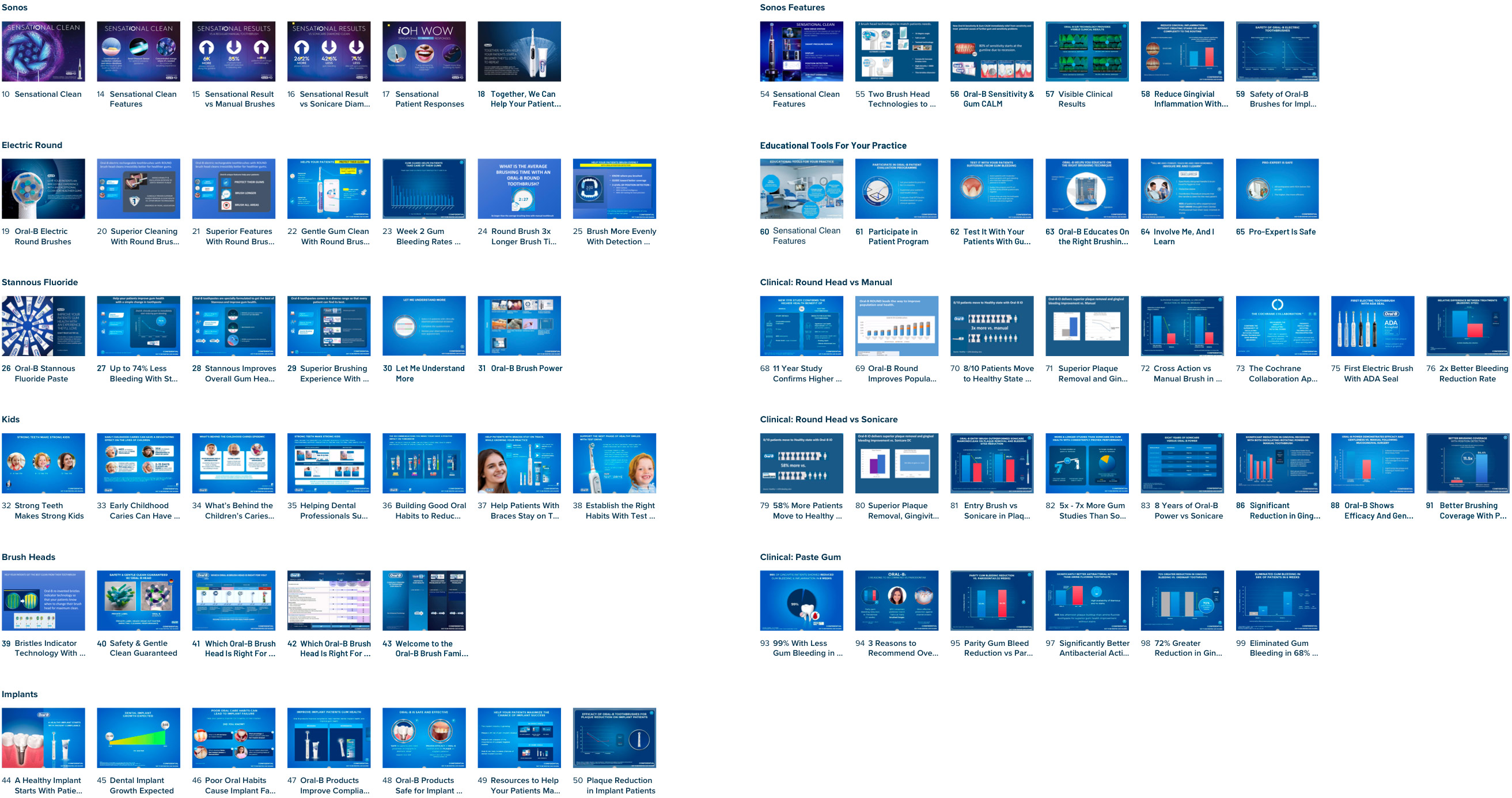
Instead of solely looking at each slide in isolation, I became interested in how the slides relate to each other during a presentation. Specifically, I wanted to receive a mock detail session from a rep. Thus, Oral-B granted me interviews with 3 sales reps. The key findings are shown in the next section.
I observed and listened to sales reps' presentations, and also asked about their experience with the PDF slides, pain points, and suggestions for improvement. I also spoke with sales managers to consider their needs. Below are my interview questions, and key themes and insights I identified for both user groups.
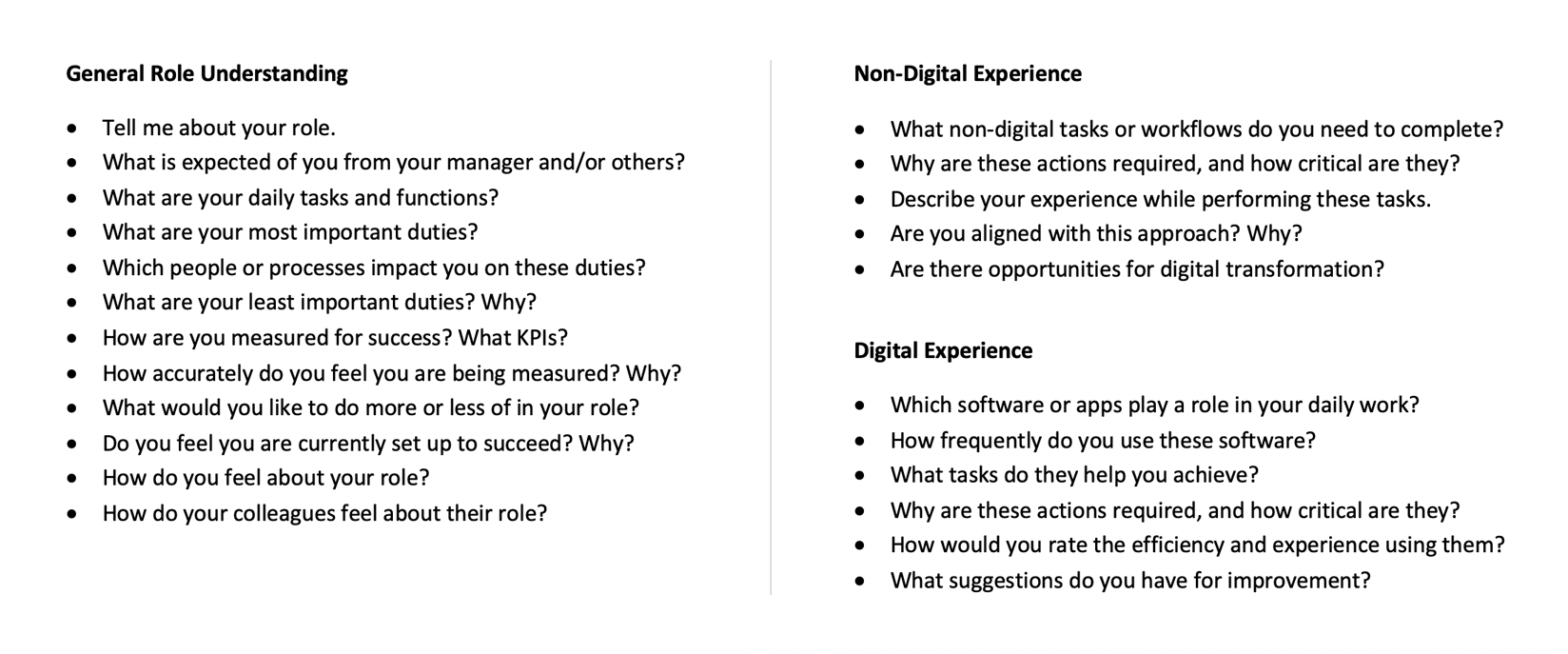

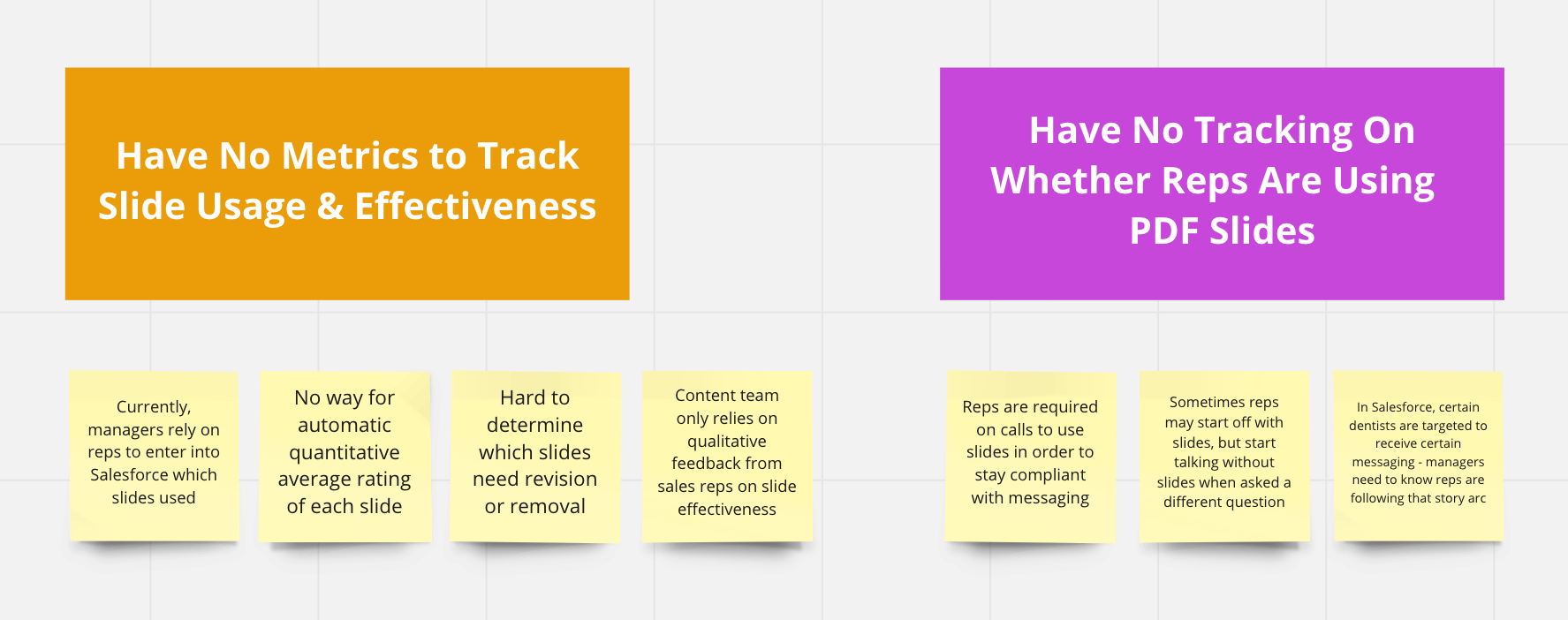
After evaluating both sales reps and managers' viewpoints, it became apparent to me that the more immediate need was designing an application architecture that enabled flexible slide detailing, as well as automated slide usage detection, instead of merely redesigning the slide visuals. Most sales reps were not as concerned with the slide quality. I brought this recommendation to Oral-B stakeholders, and they were aligned to this pivot.
Based on these interview and research findings, I envisioned and proposed new sales rep workflows for pre-call planning, in-call detailing, and post-call note entry, as shown below.
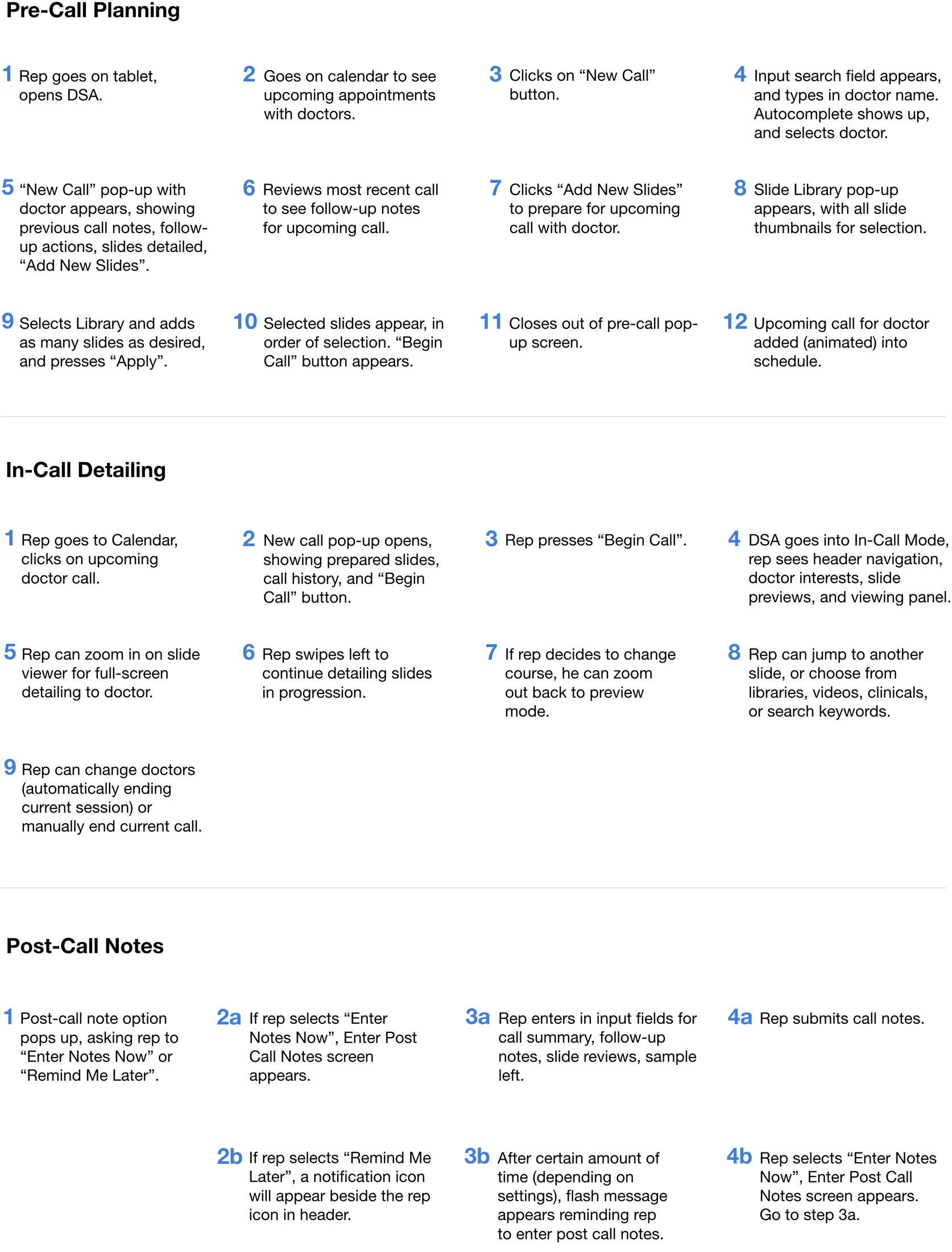
Once Oral-B stakeholders were bought in and aligned with my team's vision in these future state journeys, we defined prioritized features and requirements for the Digital Sales Aid MVP product, as shown below:

Customizable Slide Presentations Reps will be able to compile their own 'story arc' and apply them to relevant dental professionals.
Slide Keyword Search Each slide will have a name, ID, and will be searchable, with autocompletion results for easier discovery.
Automated Slide Usage Detection Any slide detailed by sales reps will automatically appear in the post-call notes, with a time stamp. Reps no longer have to remember which slides they used.
Slide Effectiveness Ratings Reps will be able to rate slides after each call, to determine relevance to the dental professional. Each slide will have an average rating.
Slides & Resource Sharing Reps will be able to share slides, videos, clinical studies, or resources with dental professionals with a simple button click.
After identifying requirements, I spoke at length with Jinto, Mindtree technical architect, about how data may be displayed throughout the DSA app. Even during early ideation, I give equal importance to database setup and UI layout. Below is my entity relational diagram, with mapped object classes, attributes, and data leveraged in the app. This documentation also helps developers understand my UX intentions.
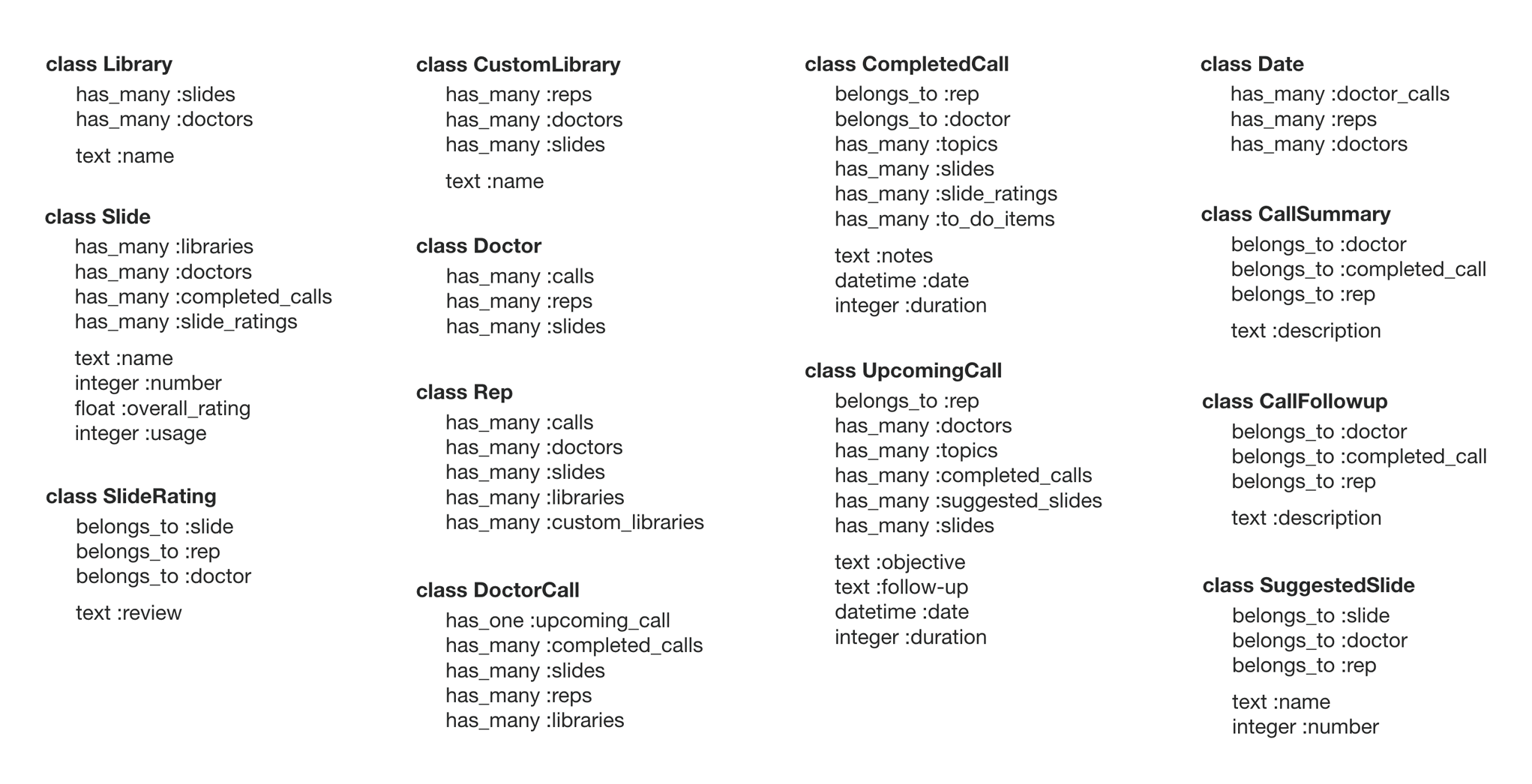
Early on, I sketched and shared possible designs with Jinto. Much of our conversations entailed accessing data from a Salesforce backend and displaying it in a custom designed interface. We talked through Javascript interactions, such as pop-up modals and swiping gestures. Since Oral-B sales reps use tablets to present their detail slides, Jinto and I agreed on an interactive tablet app that facilitated search, activity log, pre-call, in-call, and post-call planning.

Once Jinto and I aligned on high-level design layouts, I created low fidelity wireframes to share with Oral-B stakeholders and sales reps. They offered suggestions and revisions, and after numerous workflow iterations, we defined the MVP product architecture. I then began designing a mid fidelity prototype.
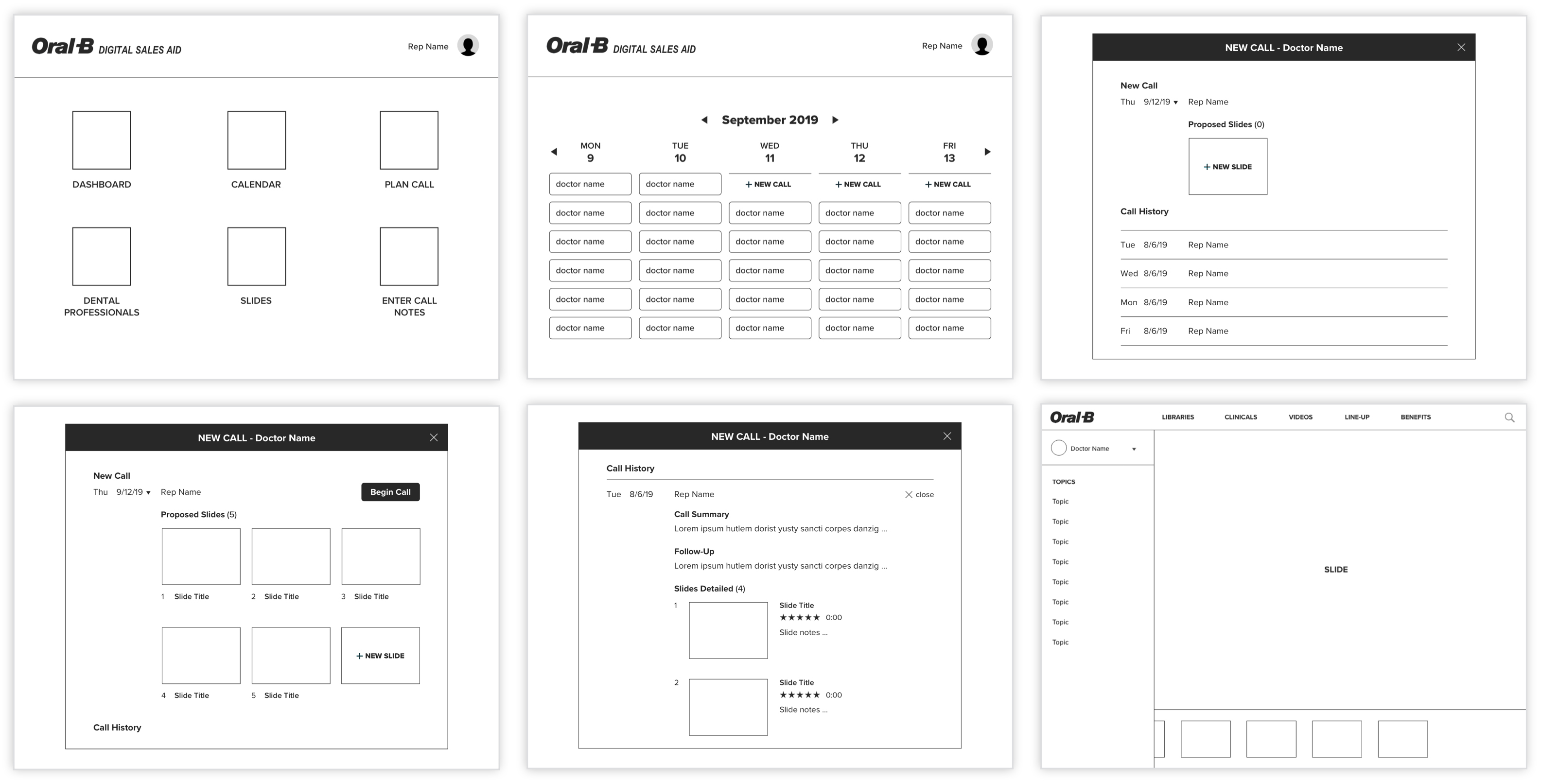
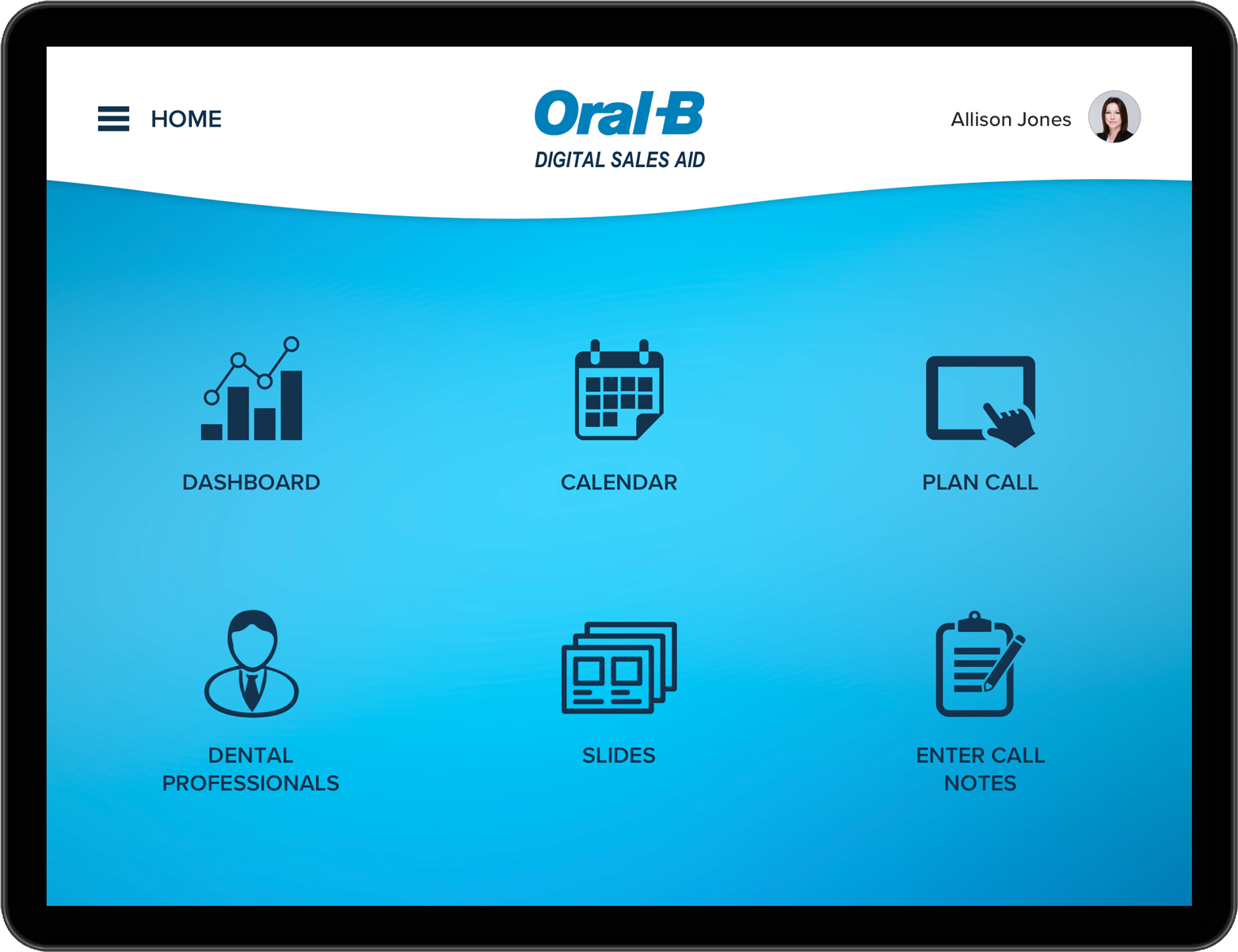
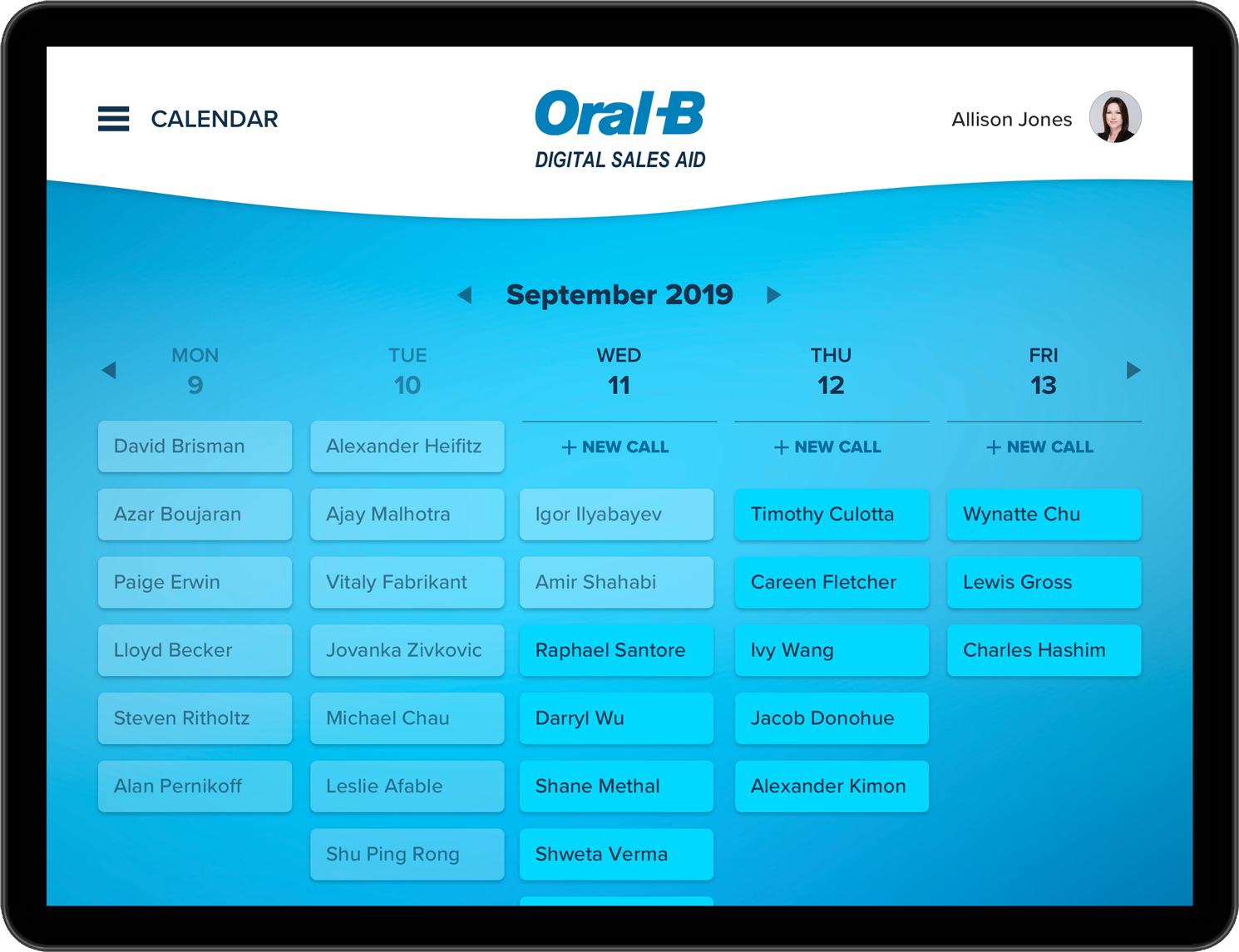
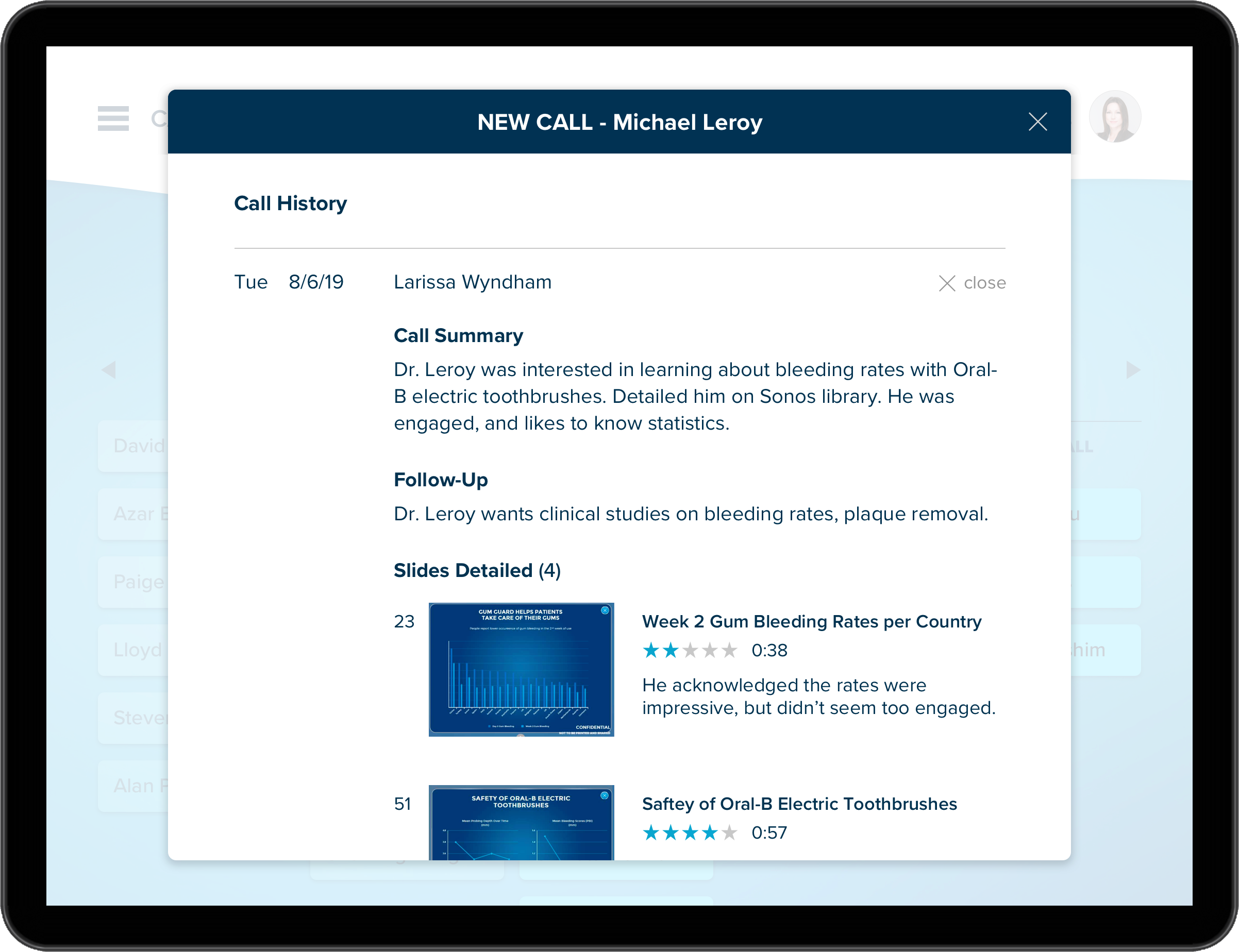

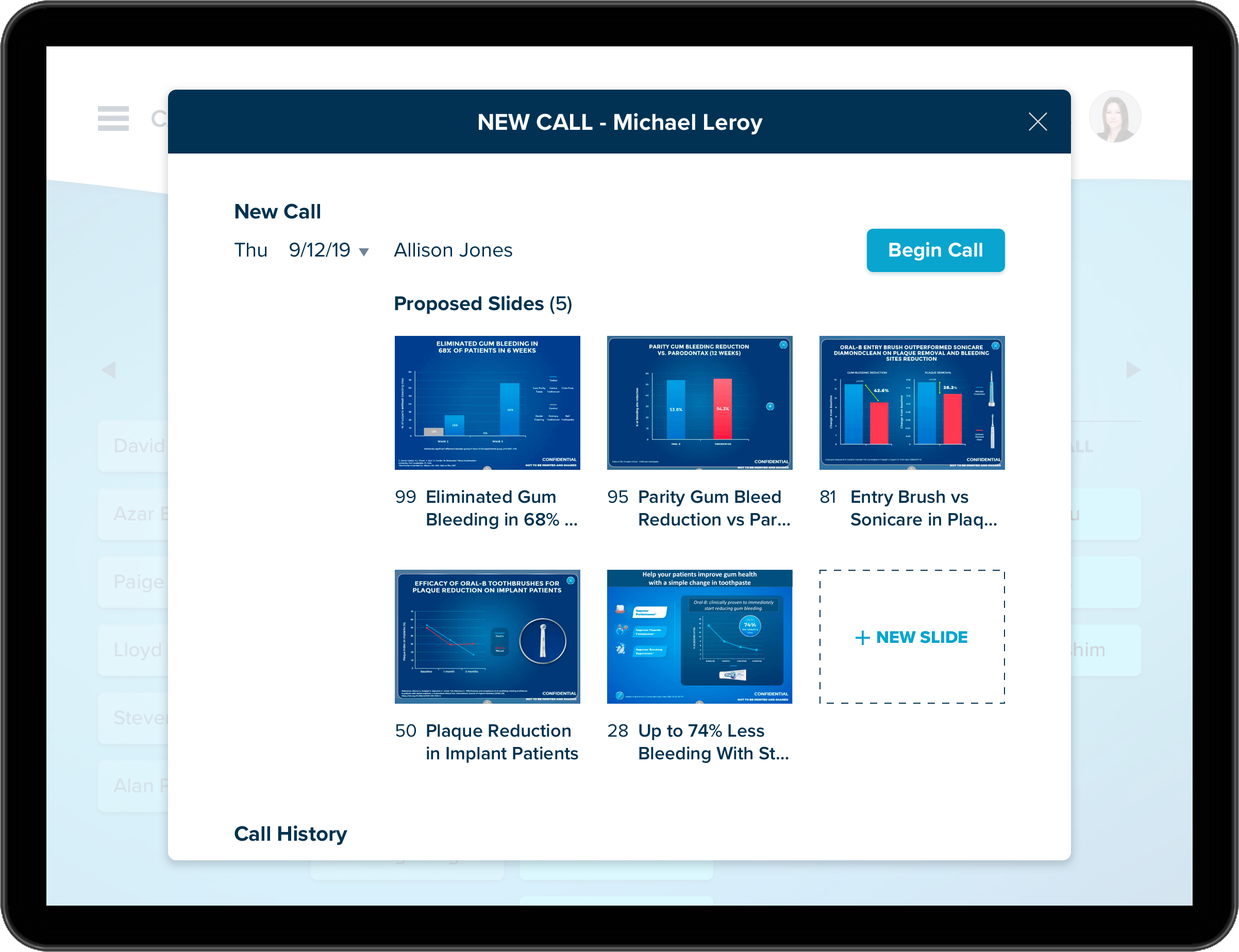
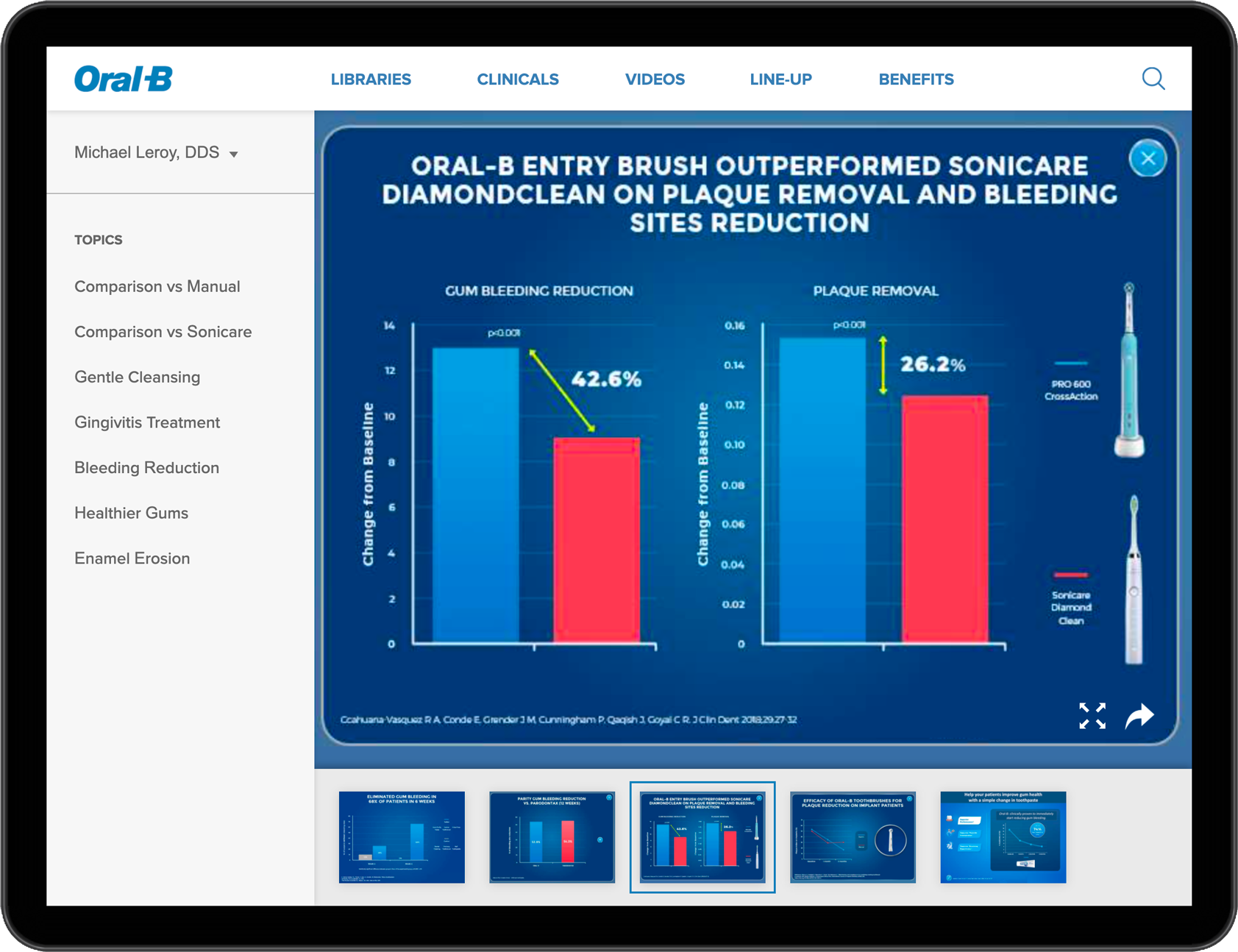
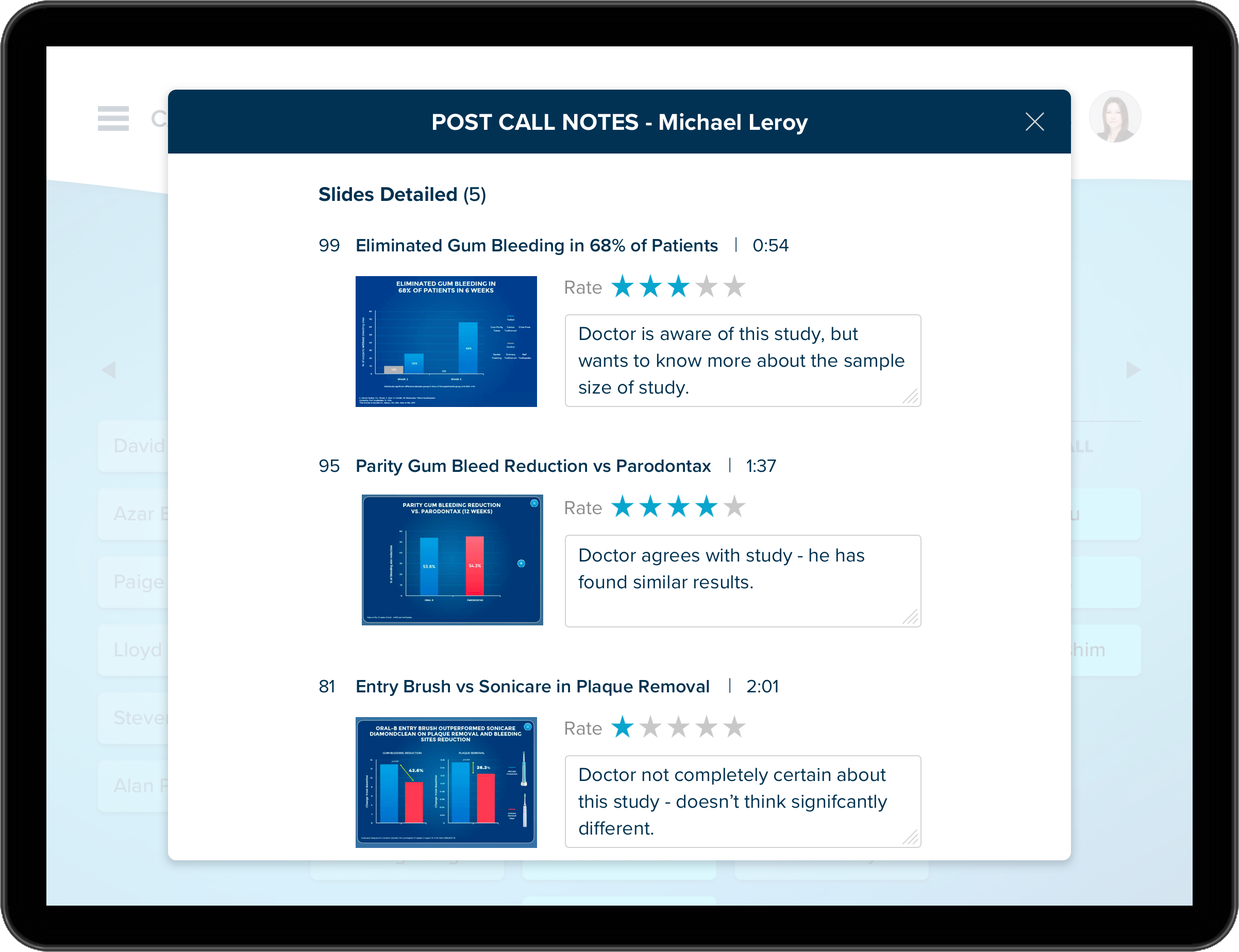
The Oral-B team was delighted with the final prototype, as it exceeded their expectations. Sales reps were excited with new features, such as customizable slide presentations, automated slide usage detection and time tracking, and an app interface integrated with Salesforce back-end. Stakeholders wanted to continue conducting further usability studies and plan for a full development launch, but have decided to resume once the covid pandemic situation has subsided with improved safety. The success of this digital transformation project opened the doors for my team to work with Johnson & Johnson on a similar sales tool targeting eye care professionals.